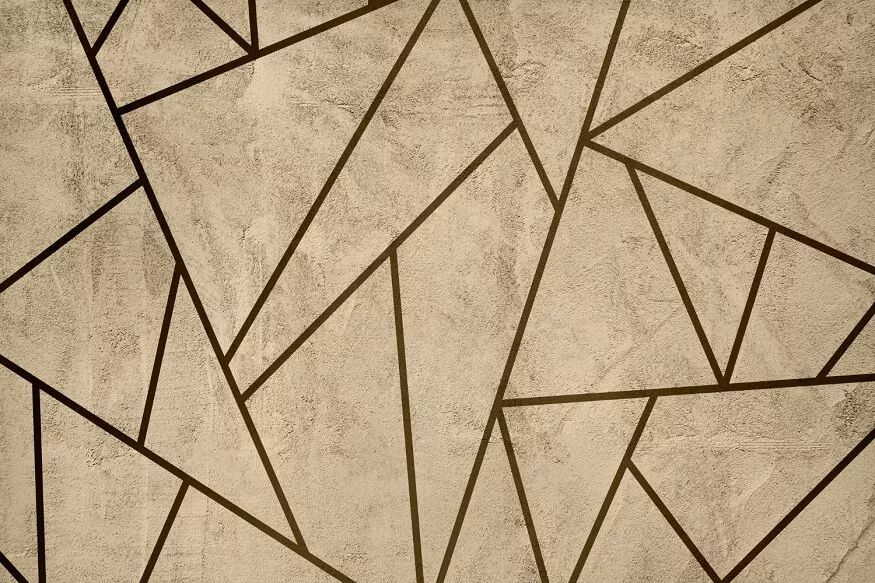In thе world of shapеs and crеativity, thеrе’s somеthing supеr cool callеd tеssеllation. It’s whеrе gеomеtry mееts art in thе most awеsomе way. In this article, we will dеlvе into what tеssеllation is, showcasе bеautiful tеssеllation pattеrns, discuss various typеs of tеssеllation, and providе еxciting ways to introduce this captivating concеpt to childrеn.
What is Tessellation?
At its core, tessellation is the art of tiling a surface with shapes that fit together perfectly, leaving no gaps or overlaps. This intriguing concept has been embraced by artists, mathematicians, and designers throughout history, from the intricate Islamic tile designs to the mesmerising works of M.C. Escher. Tessellation adds a touch of order to the creative world, making it a perfect playground for both artistic expression and mathematical exploration.
In short, Tessellation is a pattern made of shapes that fit perfectly together without any gaps or overlaps. Imagine a floor tiled with squares where each square fits snugly next to the other – that’s tessellation! It’s like a jigsaw puzzle where each piece is repeated to cover an entire area.
Tessellations have been used throughout history, from ancient Roman mosaics to modern-day architecture. They are not only beautiful but also practical, helping us understand space and design better.
Also Read: Trigonometry: Introducing trigonometric ratios, trigonometric identities, and their applications
Tessellation Patterns Examples: A Visual Feast
Before delving into the different types of tessellations, let’s marvel at the beauty of tessellation patterns. Some common examples include hexagons, squares, triangles, and rhombi seamlessly arranged to cover a surface. These patterns can be simple or highly complex, showcasing the endless possibilities that tessellation offers in the world of design and aesthetics.
- Hexagonal Tessellation:
- Square Tessellation:
- Triangle Tessellation:
- Rhombus Tessellation:
Hexagons, with their six equal sides, form a captivating tessellation pattern. Honeycombs in beehives are a natural example of hexagonal tessellation, showcasing the efficiency and beauty that emerges from this geometric arrangement.
Squares can create visually striking tessellation patterns. In this arrangement, the sides of each square align perfectly with the sides of adjacent squares, forming a regular grid that covers the entire surface without any gaps.
Triangles, with their sharp angles and dynamic shapes, can be arranged to create intricate tessellation patterns. Artists often use equilateral triangles to form mesmerising designs that showcase both symmetry and complexity.
Rhombi, or diamond-shaped tiles, offer another avenue for creating captivating tessellation patterns. The alignment of these shapes creates visually stimulating designs that can be both symmetrical and aesthetically pleasing.
Also Read: Circles: Analysing Properties of Circles, Including Chords, Tangents, and Angles in a Circle
Different Types Of Tessellations
Tessellations can be classified into three main types based on the shapes used and how they fit together:
- Regular Tessellation:
- Semi-Regular Tessellation:
- Irregular Tessellation:
In regular tessellation, a single type of regular polygon covers the entire surface without any gaps or overlaps. The three regular polygons that can tessellate a plane are equilateral triangles, squares, and hexagons. M.C. Escher’s famous artwork often features regular tessellations, showcasing the precision and beauty achievable with this type.
Semi-regular tessellation involves the use of two or more regular polygons in a repeating pattern. Each vertex in the tessellation looks the same, creating a harmonious yet diverse visual effect. This type of tessellation offers more flexibility in design and is often employed in architectural elements and decorative arts.
Irregular tessellation allows for the use of different shapes and sizes to cover a surface. While irregular tessellations may not possess the same level of symmetry as regular or semi-regular tessellations, they offer a unique and creative approach to exploring the concept. Artists often use irregular tessellation to push the boundaries of traditional geometric patterns and create visually stunning and unpredictable designs.
Also Read: Probability: Understanding probability concepts and solving problems related to chance events.
Introducing Tessellation to Children
Now that we’ve unravelled the mysteries of tessellation, how can we make this captivating concept accessible and enjoyable for children? Here are some creative ways to introduce tessellation to young minds:
Exploring Shapes
Start by introducing basic shapes to children – squares, triangles, and hexagons are great for tessellation. Discuss how these shapes can fit together. For example, six equilateral triangles can form a hexagon.
Hands-On Activities
- Paper Cut-Outs:
- Tessellation Artwork:
- Outdoor Tessellation Hunt:
Give children paper shapes to experiment with. They can try arranging them on a large sheet to see how they fit together.
Encourage children to create their tessellation artwork. They can trace shapes and colour them to make a pattern.
Take children on a walk to spot tessellations in the real world, like brick paths or tiled floors.
Understanding Symmetry and Repetition
Explain symmetry in tessellation. Show how shapes can be flipped or rotated but still fit together. Use mirrors to demonstrate reflective symmetry.
The Magic of M.C. Escher
Introduce children to the work of M.C. Escher, a famous artist known for his mind-bending tessellations. Show them how he transformed regular shapes into animals and objects.
Mathematics in Tessellation
Discuss the maths behind tessellation. Older children can explore angles and how certain shapes tessellate due to their angles add up to 360 degrees.
Digital Tessellation Tools
Introduce digital tools and apps that allow children to create tessellations. This modern twist can make learning more interactive and fun.
Creative Challenges
Set challenges for children to create their tessellations or find the most unusual shapes that tessellate.
Reflection and Discussion
Encourage children to share their tessellations and discuss what they found challenging or exciting. This reflection helps deepen their understanding and appreciation of tessellations.
Incorporating Tessellation into Other Subjects
Show how tessellation is relevant in subjects like geography (tectonic plate tessellations), biology (honeycomb structures), and art (pattern design).
Also Read: Statistics: Collecting, Organising, and Interpreting Data Through Mean, Median, and Mode
Tessellation, with its blend of mathematical precision and artistic creativity, presents a captivating journey for children to embark upon.
In EuroSchool, through the exploration of different types of tessellations and engaging, hands-on activities, children can not only grasp the concept but also develop a profound appreciation for the beauty and order that tessellation brings to the world of art and design. At our school, we let the creative adventure begin as young minds unlock the wonders of tessellation, turning geometric patterns into a canvas for boundless imagination.









